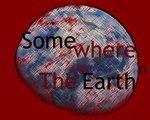The sustainable wedding cake explained

The “wedding cake” model for the Sustainable Development Goals (SDGs) offers a compelling visual metaphor that places the biosphere as the foundational layer beneath society and economy, emphasising that our economic activity and social systems must rest on healthy ecosystems.
By structuring the SDGs into three tiers, ecological/planetary boundaries first, social systems next, then economic systems, the model helps simplify a complex network of 17 goals and 169 targets into a clearer hierarchy of dependency.
This approach underscores that you cannot securely build social wellbeing or economic prosperity without first maintaining the integrity of the Earth’s systems, a strong shift away from any “economy first” mindset.
The model also helps policy-makers and organisations recognise that tackling one part of sustainable development in isolation, for example economic growth which is the main objective of capitalism, may undermine other layers such as ecological resilience if not integrated.
From a communication perspective, the cake metaphor is powerful because it invites learners, businesses and communities to see how social goals (education, health, equality) are sandwiched between the planet and the economy, showing their interdependence.
However, while the model is visually compelling, it still needs practical translation into measurable actions, one risk is that organisations use the metaphor without grounding it in metrics for each layer and their interactions.
Another strong asset of the model is highlighting that partnerships (SDG 17) cut across all layers, the icing on the cake, so to speak, emphasising cooperation across sectors and scales is essential for success.
For businesses looking to link their sustainability strategy to the SDGs, the wedding cake framework presents a strategic tool to map where their operations sit: are they impacting the ecological base, contributing social value, or driving economic innovation?
It is also useful in educational settings, where teachers can use the model to show students how, for example, climate action (bottom layer) enables health and education (middle), which in turn support jobs and innovation (top).
In short, the wedding cake of sustainability is more than a nice graphic: it is an invitation to think systemically, to align sustainability efforts from the ground up, and to avoid the trap of siloed actions that ignore our planet’s foundational role.

Popularized by Fabrice Delobette